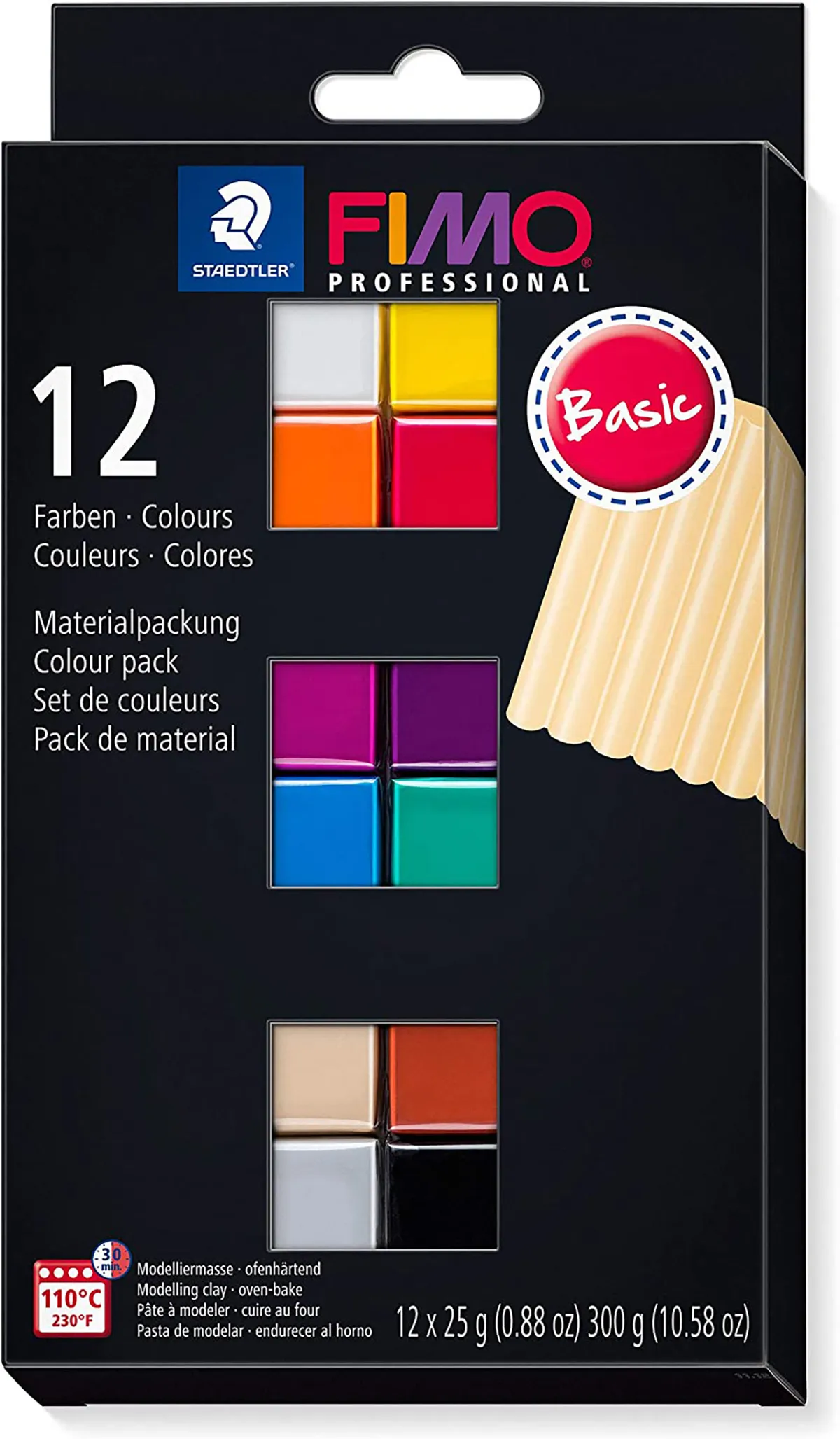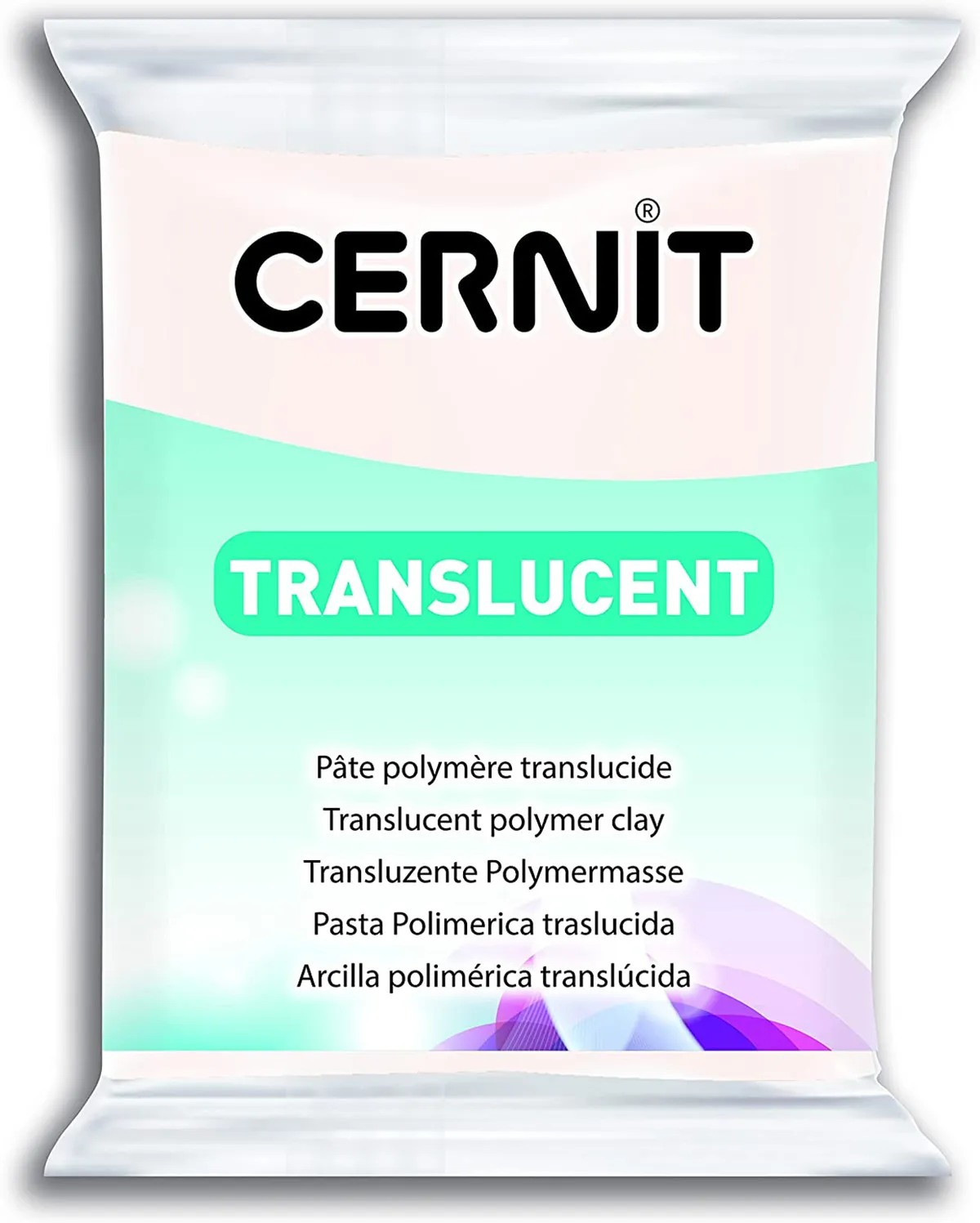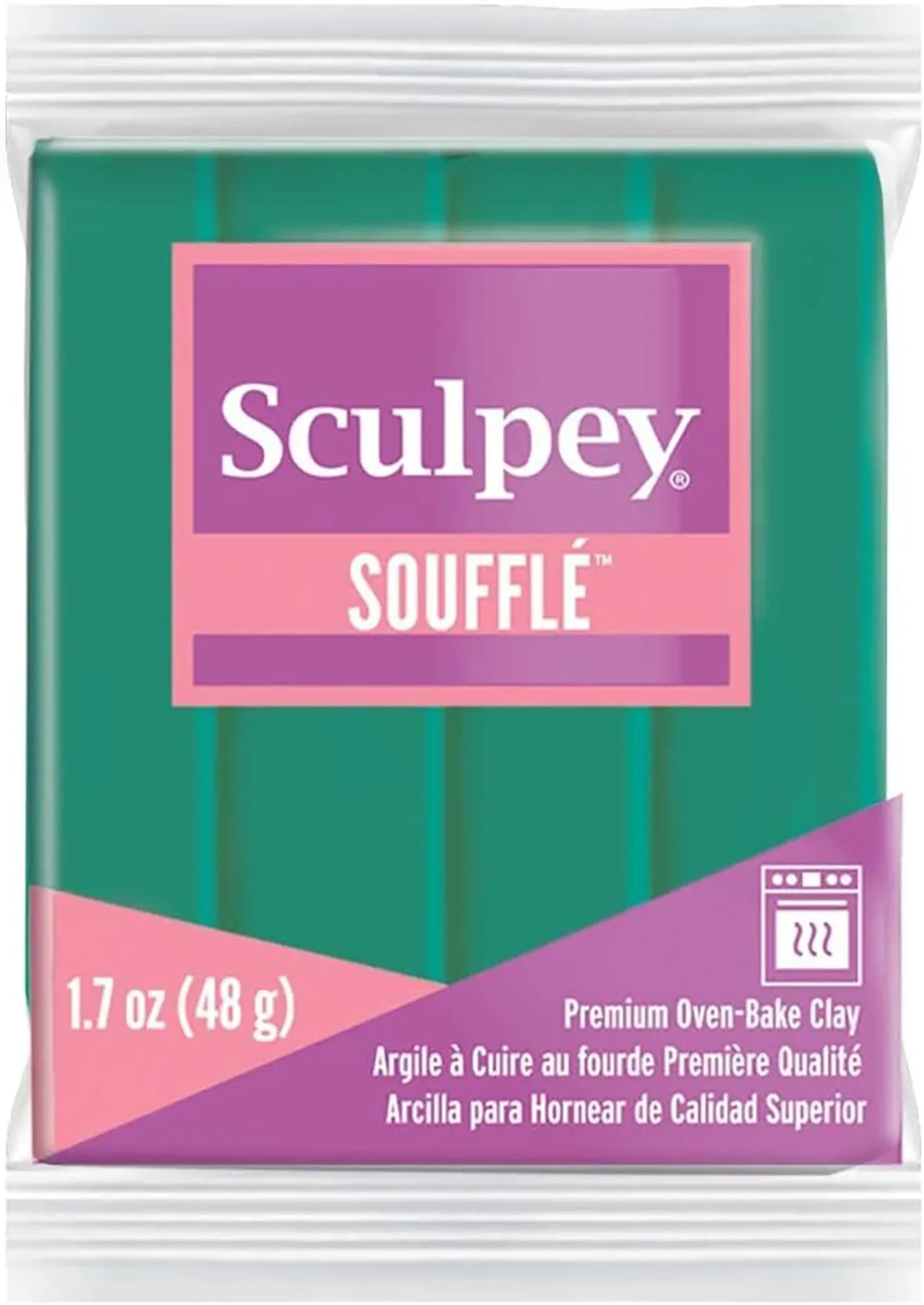Polymer clay is a type of synthetic clay that can be cured or hardened by baking it in a domestic oven. There are plenty of brands of polymer clay available and each is suited to a certain type of sculpting.
For earrings, you will need a strong and durable type of polymer clay, one which hardens even delicate designs. This will ensure your clay earrings are long-lasting and high-quality (which is especially important if you are going to sell them!).
It’s best to look out for the ‘professional’ version of each clay brand, as opposed to kid’s or soft polymer versions. The pro version of each brand will be sturdier and more effective for intricate earrings and jewellery.
Best polymer clay for earrings
If you’re new to polymer clay, it’s likely you’ll have lots of questions about baking, techniques and problems you might encounter. We’ve answered all your polymer clay earring-related questions below!
How do I know if my polymer earrings are baked correctly?
Each clay brand will give you guidelines for baking times for the size of your project, so you should follow their recommendations.
Once cured your cooled clay should feel strong and not fragile, plus have a degree of flexibility. You should be able to press your fingernail into it without breaking through the clay.
Why are my polymer clay earrings still soft after baking?
If your earrings are soft after baking this means the clay has not cured. You can rectify this by baking them for longer at a slightly higher temperature.
Should I glaze my polymer clay earrings?
No, you do not need to glaze polymer. It’s already water-resistant and has a durable surface once cured.
If you want to glaze it to make it shinier, you can use a coat of resin.
Do polymer clay earrings break easily?
No, if you’ve baked your earrings for the correct amount of time at the right temperature they should be strong and not brittle.
Do I need an oven for polymer clay?
Yes, your polymer clay creation will need to be baked in the oven. The great thing about polymer clay is that it will not begin to dry or set without being put in an oven. This means you have lots of working time.
Can I get polymer clay earrings wet?
Polymer clay is water resistant, but you should avoid getting your earrings wet to extend their life.
Where to buy polymer clay for earrings
Here are our top recommendations if you want to create polymer clay earrings! If you’ve ever dipped a toe into the world of polymer clay it’s likely you have heard of these brands before.
1. Fimo Professional Oven-Hardening Polymer Modelling Clay

Fimo has a variety of polymer clays to choose from. It’s not recommended to use the soft or kid’s versions of Fimo for jewellery making. This is because when cured, they remain on the softer side - not ideal for delicate earrings!
Fimo professional, however, is a firmer clay and will hold a delicate structure better. As a general rule: the firmer the clay is to begin with, the firmer it will be once it is cured.
For a beginner, we would recommend this kit which contains 12 blocks of clay in a variety of colours. There’s also the option of adding sculpting tools, which are very helpful! Since there are so many colours it gives you the option to test out all sorts of earring styles.
As a blanket rule, Fimo says you should bake your clay at 110°C for 30 minutes. However, be sure to check the guide that comes with your clay and bake according to the guidelines.
2. Cernit Translucent Clay

If you are looking to create earrings with a translucent effect, Cernit is your brand! This clay is particularly effective at creating a ‘glassy’ effect and can be used to create earrings that look like gemstones or marble.
This clay is a unique alternative to matte clay. It will make your jewellery look expensive and classy, especially when mixed with gold leaf or glitter. It also comes in various colour shades too.
A thing to note is, after your clay is baked you’ll need to do a fair amount of sanding to smooth any rough edges and give it that ‘tumbled gemstone’ appearance.
To give your finished piece a gorgeous shine, paint a layer of UV resin on the top.
Find out everything you need to know about polymer clay
Polymer clay is so versatile, you can create models, jewellery, coasters and much more! Get the full guide to polymer clay right here on Gathered.
3. Sculpey Soufflé polymer clay

Scupley recommends this line for artists, which means it can hold great detail and is perfect for earring creation!
When cured or baked this clay has a gorgeous suede-like finish, ideal for statement earring designs. It’s available in a variety of trending colours, including sea glass, jade and latte – suited to modern styles.
Since the palette of colours is all similar in saturation, they complement each other when next to one another, or if you are mixing to create a new colour.
Once you’ve baked this clay, it doesn’t need to be sanded! It will already give you a beautiful matte finish. If you wish to have more of a shine, it can be sanded, but we think it looks better matte!
Check out the image below from Sculepy to see the clay in action. They have created a delicate flower clip which goes to show just how detailed yet sturdy your creations can be when using this clay.

4. Liquid Sculpey polymer clay

Sculpey’s other pro range is liquid clay! If you are new to the clay world you might not have realised that it comes in liquid form. Fimo and Cernit also have liquid clay but Scupley has a larger range of colours!
These liquid clays can be used with a silicone mould, in a similar way as if you were working with resin. You can add charms, glitter or gold leaf to your moulds for extra sparkle.
In terms of curing the clay, it works the same way as the other clays on this list – you bake it! Once it is baked you can remove it from your silicone mould and attach your earring findings.
Get the right polymer clay for your project!
To sum up, your polymer clay for earrings needs to be strong and durable with some flexibility. Any of the clays on our list will be ideally suited to earrings or jewellery making.
We’d suggest thinking about what sort of style earrings you’d like to make and then choosing the clay which best suits it.
Make your first pair of polymer clay earrings!
Follow along with polymer pro Kelly Chapman’s clay earring tutorial. Once you’re finished you’ll have a gorgeous pair of statement earrings.
